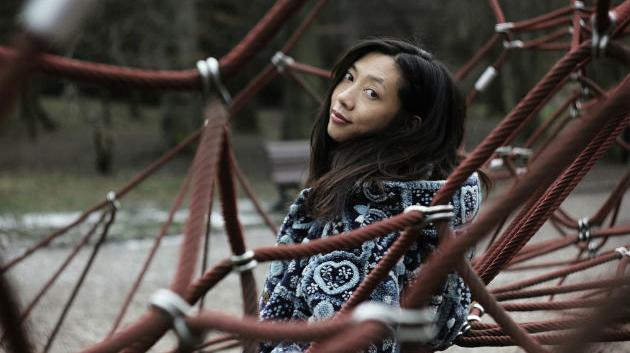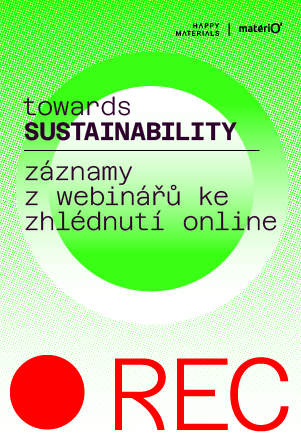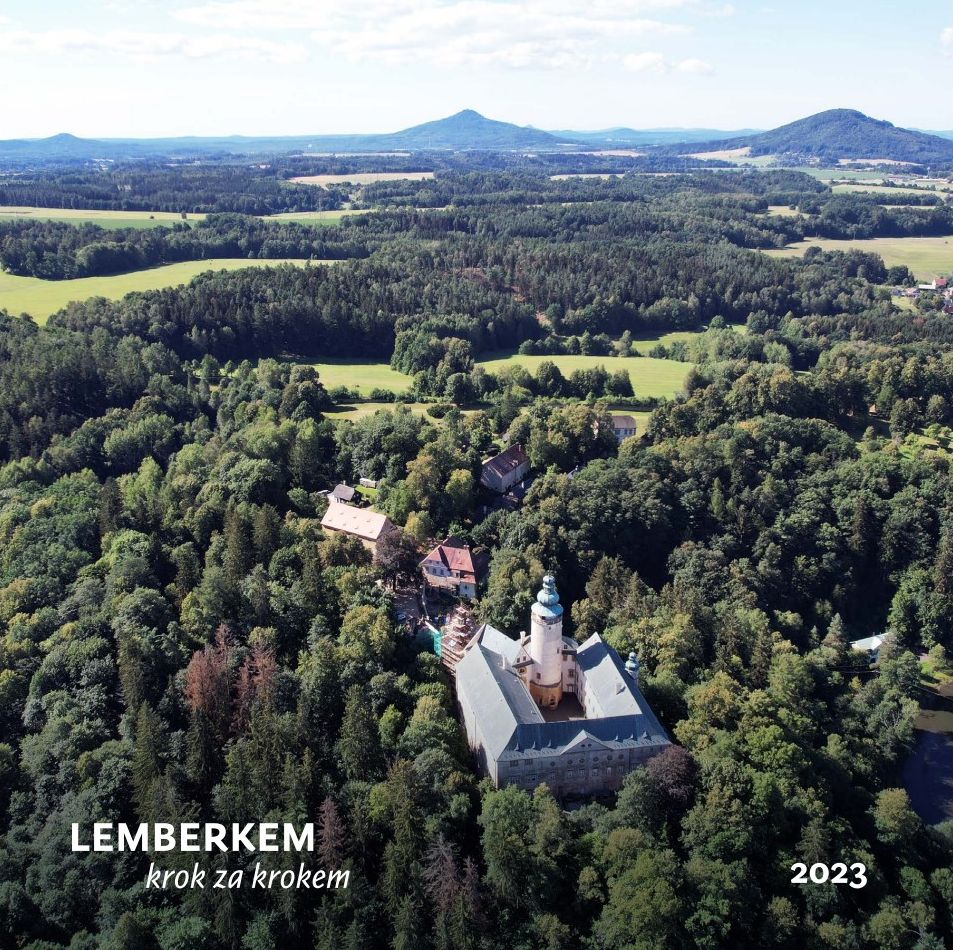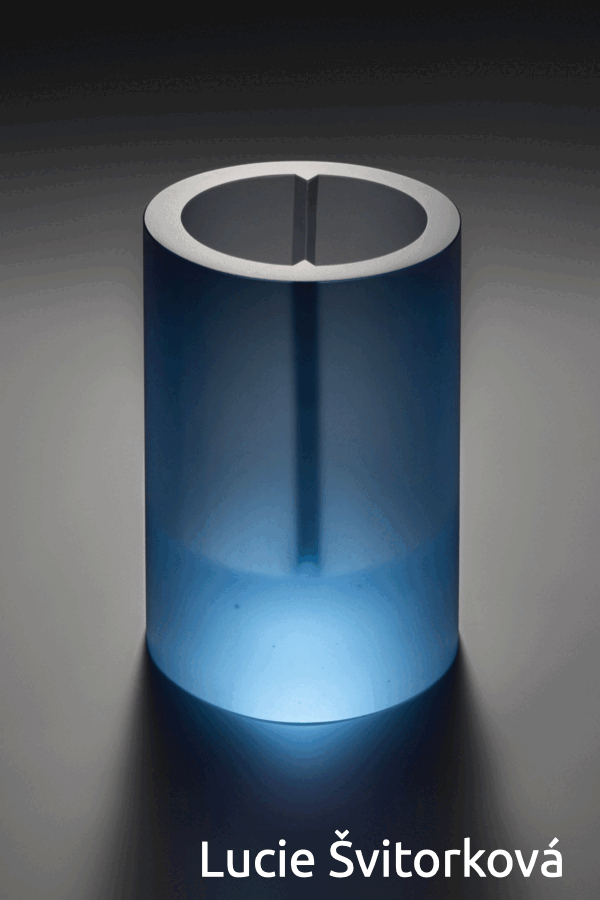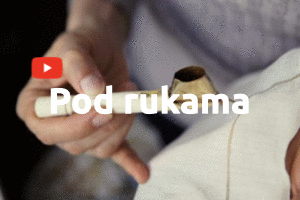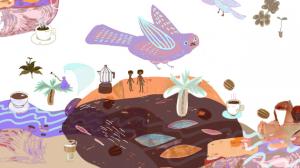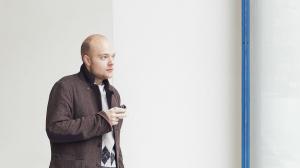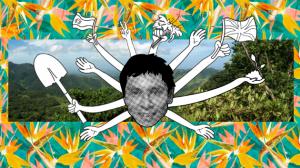Interview
Fashion Designer Mai Trần: Vietnam is a Country of Sewing Machines
Startup fashion designer Mai Trần calls herself a mountain girl. She has been living in Saigon for some years now and she is steadily becoming a recognized figure of the local fashion scene. As the co-founder and co-owner of the brand SODA POP, she is very well acquainted with the environment of the Vietnamese clothing industry. She decided to share her erudition with our readers.
► českou verzi článku najdete zde
Throughout the interview she mentions the reasons for the decrease in production of Vietnamese silk and other traditional materials. Then she goes on to explaining why she prefers cotton made in Korea and Japan. Mai Trần visited the Czech Republic with her fiancé who engages in research of the Vietnamese culture and language, Ondřej Slówik; he occasionally added his opinion on some of the discussed issues.
Which part of Vietnam do you come from?
I come from Dalat, a city about four hundred kilometres northwest of Saigon.
Did the local culture influence your choice of profession and your relationship to fashion?
I don’t think so. My mother died when I was still a baby and I spent most of my childhood in an orphanage in Dalat. I was raised there and I also learnt a lot of useful skills like cooking or crocheting. I After graduating from high school, I originally wanted to study design but in the end I obeyed my sister’s advice and entered the Department of Corporate Finances at the University of Economics in Saigon.
So how did you find the path to fashion design?
After I finished the university, I worked in a few companies in the field of corporate financing and I gradually got fed up with it. Two years later, I decided to start my own business. I bought my friend’s old shop and opened my first boutique called Tanpopo.
What kind of clothes did you sell? Did you design it yourself?
Not yet. Similarly to other shop owners, I imported clothes from Bangkok. I was choosing whatever I liked – various colourful and even eccentric pieces in vintage style. Unfortunately, it was barely enough to make a living. After a year I realized that I wanted to design my own style. I sold my shop and teamed up with Phuong Ha (Cỉn Tung) to set up our own brand named SODA POP.
Are Vietnamese startuppers eligible to any kind of financial aid?
I cannot generalize but I was not. When I decided to buy my first shop I had to ask friends and relatives for financial support. Before Cỉn and I established SODA POP, we put together our own money and one year before opening the shop we existed only on Facebook and Instagram.
What style do you design for SODA POP? Who is the target group of your brand?
From the very beginning we have been focusing on young girls and women in the age span 15 to 35. However, you can see ladies in their fifties coming into our shop but that is more of an exception. Our style is governed by the motto “Simple but smart” – it is simple, minimalist, light, not very luxurious but very feminine and elegant.
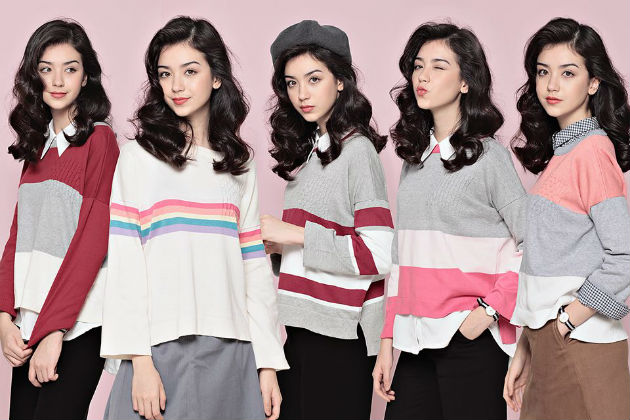
SODA POP Collection
Where do you draw inspiration from? Who is your fashion design idol?
I admire Alexander Wang but I draw most inspiration directly from my customers. Clothes that we design are intended for a specific type of people – I know that Vietnamese students are often forced to get along on a shoestring and they must think twice before buying anything. When they choose to become our customers we want them to have clothes that are comfortable, good quality, long lasting and easy to combine with other clothes.
Have you got your own workshop?
You could call it workshop for now but we would like to transform it into a factory in the future. Currently, our team amounts to 50 people divided into groups with various responsibilities – one group is responsible for the design, another group is in charge of cutting and others occupy themselves with making the actual clothes and printing designs.
Is your workshop located directly in Saigon?
No, we have to keep all the information secret due to competition. Every design we create is at high risk of being copied, manufactured out of low quality materials and sold for a discount price without any need of marketing. Stealing ideas and copying designs constitute a substantial problem in the Vietnamese fashion industry.
What materials do you use? Is their origin important to you?
That is a very good question. Although we sell quite many pieces of clothing every day, we cannot afford to produce our own fabric. In the future, however, we would like to do so. Vietnam is currently a massive clothing factory producing clothes for some of the biggest brands in the world, which is the reason why the specialized fabric markets sell a large selection of fabric from many countries – Korea, Japan, China, Taiwan, Hong Kong or Indonesia. We are looking mainly for Japanese and Korean cotton due to its top quality. Before using any fabric we test it thoroughly by washing it in a washing machine and by hand to determine its durability.
Do you use eco-friendly materials?
We are interested in eco-friendly materials chiefly because we do not want to use types of fabric containing too much PVC that do not absorb moisture. An easy way to recognize 100% cotton is setting it on fire. If you smell burning hair, it is good quality cotton. If I wanted to produce my own eco-friendly fabric, it would be extremely costly but I will think about it. I might set up a business producing eco-friendly material and start an ecological campaign in Vietnam.
And what about the Vietnamese customers – are they used to considering ecology while shopping? To what extent are they influenced by the eco-friendly rhetoric?
Vietnamese people are used to asking such questions in relation to food or agriculture but not really when thinking about fashion. They are mostly interested in design, brand reputation and finally in price. You can create a design using eco-friendly material but it does not look good. The customers will then choose something made of PVC that is colourful, shiny and cheap.
Our magazine recently published an article on the vanishing tradition of flax industry and how flax is gradually disappearing from Czech fields. Are you aware of any similar story concerning a traditional Vietnamese material?
Yes, in the past, Vietnam used to be famous for its silk – especially from the Hà Đông area in the vicinity of Hanoi. There used to be whole villages where all local households made living producing silk. The traditional method of its production is extremely time consuming. Moreover, China has taken over the role of silk mass producer and started exporting it to my country. There is still a small community manufacturing silk by the traditional method in the north of Vietnam but only in very small quantities. Most materials are nowadays imported from abroad. The technologies for fabric dyeing in Vietnam also do not cover the demand of the Vietnamese market. Most companies producing clothes in Vietnam dye their fabrics in other countries like Indonesia or India. Vietnam is only an assembly line for the big international players in the fashion industry.
What kind of relationship do the Vietnamese youth have towards traditional crafts?
As long as Vietnam was an economically isolated country, people were bound to manufacturing everything by themselves: furniture, shoes, silk… Today most products are imported and fewer and fewer people engage in crafts. When I opened my first shop I was selling my own handcrafted items – I painted over old shoes and bags. Unfortunately, I have no time for such activities any more. I also think it to be the chief reason for the traditional crafts vanishing – it is time consuming and it takes a lot of effort but the generated profit is very low.
And what about traditional clothes? Do they still fulfil any social function?
Yes, especially the traditional female dress Áo dài (long shirt, red.). It is a double-layer dress usually made of silk or other thin materials. The bottom part consists of a pair of wide-legged trousers; the top constitutes a long dress with long slits on the sides. When my mother was young, all Vietnamese women used to wear áo dài but nowadays the Western style of fashion is prevailing in Vietnam.
Contemporary women wear Áo dài to what kind of events?
In an attempt of preserve the tradition, áo dài is used as the school uniform. Áo dài is compulsory to wear in high school; some universities also make it compulsory to wear it at least once a week usually on Monday when students give pledge to the flag and sing the national anthem. Flight attendants, receptionists, teachers or bank assistants also wear the traditional outfit. The attire is not very practical as it is very long and not very easy to walk in. It is also rather dangerous when riding a motorcycle; the fabric can get entangled into the wheel and cause an accident, which happens quite frequently.
What about men? Do they also wear a traditional outfit fulfilling a similar function?
No, they don’t.
(Mai Trần’s boyfriend, Ondřej Slowik, stepped into the conversation.)
Ondřej Slowik (OS): Men usually wear western-style formal attire, trousers, shirts and ties.
Mai Trần (MT): Men also used to wear a traditional outfit but this tradition vanished almost completely.
You are probably glad about that, Ondřej, am I right?
OS: Not really. Áo dài would probably be better; nowadays, Vietnamese men casually wear clothes that are reserved only for important social events in the Czech Republic.
So what do you normally wear in Vietnam?
OS: Usually what other foreigners do – T-shirt and shorts because of the hot climate. However, if you are looking for a job as a teacher, for instance, such outfit is unacceptable. You must wear long trousers, formal shoes and a long-sleeved shirt with a collar otherwise it is perceived as lack of respect and you might not be given the job.
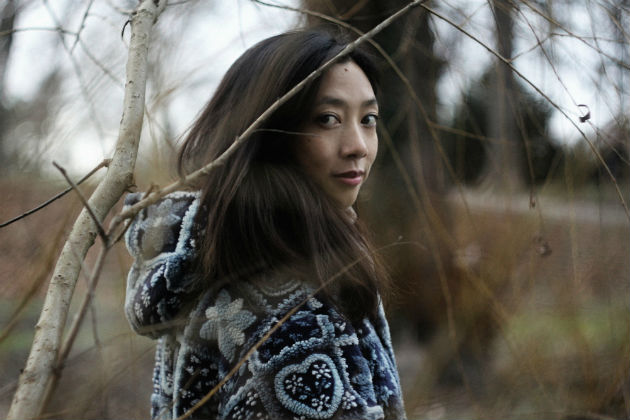
Mai, you have been in Prague for more than a month now. Is this your first visit of the Czech Republic?
It is even my first trip to Europe. Few years ago, I applied for a visa to the US twice but both times I was denied access. They worried that I would not want to go back to Vietnam. It is rather difficult for unmarried Vietnamese women to travel to the West. Even getting to Europe was problematic.
Was it interesting for you to meet so many Vietnamese people in the Czech Republic?
Thanks to my boyfriend who speaks Vietnamese, I have got the chance to meet many people who devote their time to popularizing Vietnamese culture in the Czech Republic. We visited the SAPA market and also attended a meeting of the Hanoi Club, which is an organization for people taking interest in Vietnam. I had the chance to meet Mr. Đỗ Ngọc Việt Dũng who has translated a number of Czech books into Vietnamese, including a book on Czech history. I also got to meet La Femme Mimi, a Vietnamese fashion designer based in Prague.
Do you see it feasible to open a Czech branch of SODA POP in the future?
I would have to spend more time in the Czech Republic. It is winter now and everyone is dressed in black or grey, there are sales in most of the shops. In the current situation, it is difficult to fully understand the fashion taste of the local people. I would have to find someone to discuss my impressions with. The truth is, I want to focus on the Asian market first. If we are able to increase our production in the future, we might expand SODA POP to the Czech Republic. Moreover, the Czech Republic is not the best location for launching a Vietnamese fashion business in Europe…
OS: The biggest problem of the Czech market from the perspective of a rising Vietnamese business is the fact that the reputation of Vietnamese goods and especially clothes sold here is rather bad.
MT: But those are mainly Chinese products!
OS: Yes, but Czech people associate them with the Vietnamese markets, which leads to the assumption that Vietnamese people sell poor quality products. If you try to sell something and say: “This is a superb Vietnamese product”, people won’t buy it. Czech people trust Vietnamese food but fashion industry is a different story.
What are your immediate plans for the future?
I would like to cooperate with the brand Cacdemode that has been managing a project “Seams the World”. The idea of the project is that the fashion designer designs a few plain dresses and takes it to a poor neighbourhood, where she also brings food, books and other clothes. Then she encourages the local children to draw and paint on the dresses whatever they like. The money raised goes to charity. I like the idea as well as the designs and I would like to take part in the project after I return to Vietnam. We are also planning on opening a SODA POP shop in Hanoi. My boyfriend and I will spend some time in Vietnam now but we might relocate to the Czech Republic in the future.
3. 2. 2016 By Eliška Svobodová, photo: Martina Šimková, SODA POP archive
LATEST COMMENTS
9. 4. 02:43
katana
katana - Marcos Garcia: Dancing on the new compost toilets is very important
9. 4. 02:42
katana
katana - Jan Lebl about Prameny, a municipality at the Czech German border, and civic activism in the rural areas
9. 4. 02:42
katana
katana - Fashion Designer Mai Trần: Vietnam is a Country of Sewing Machines
